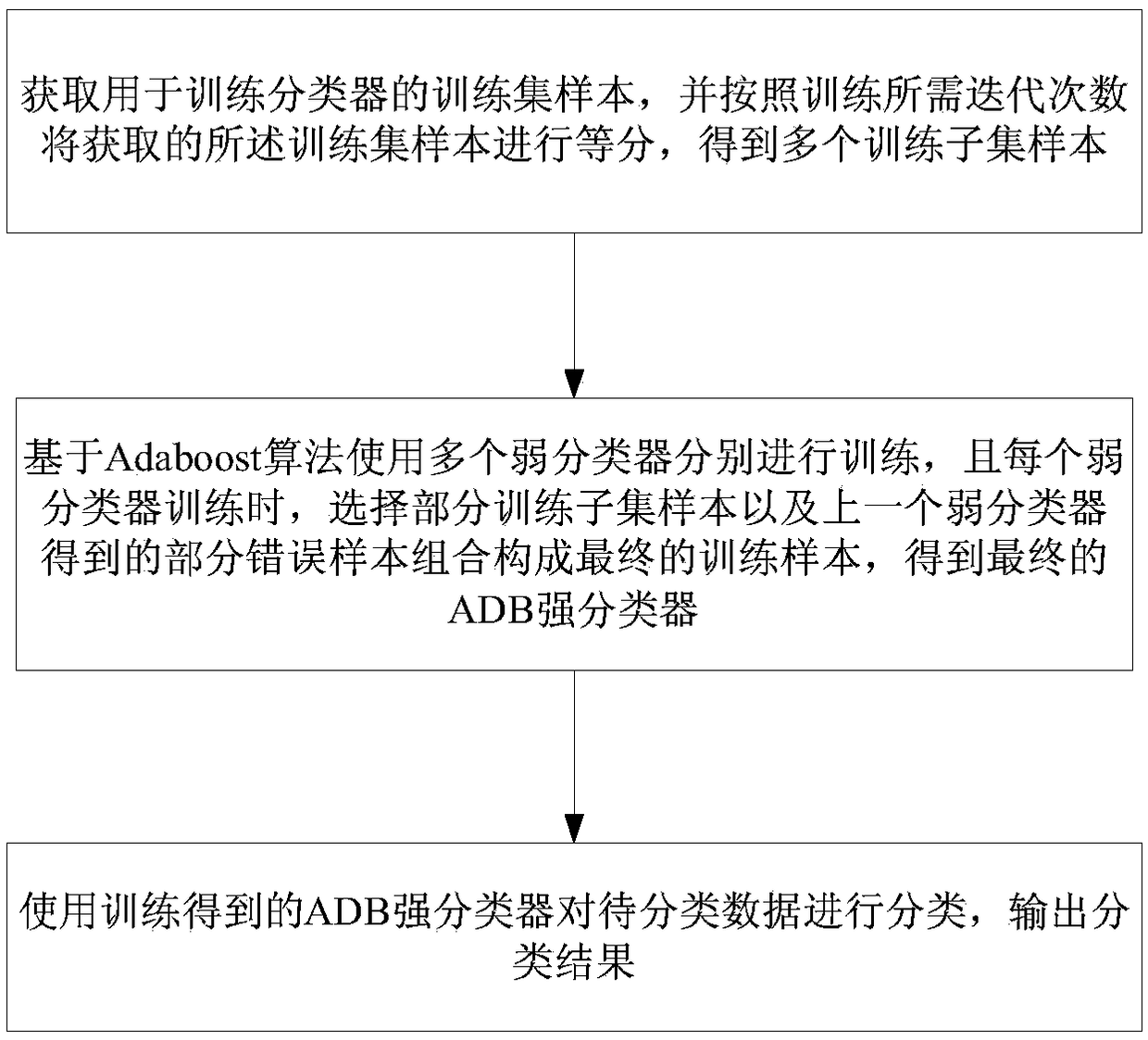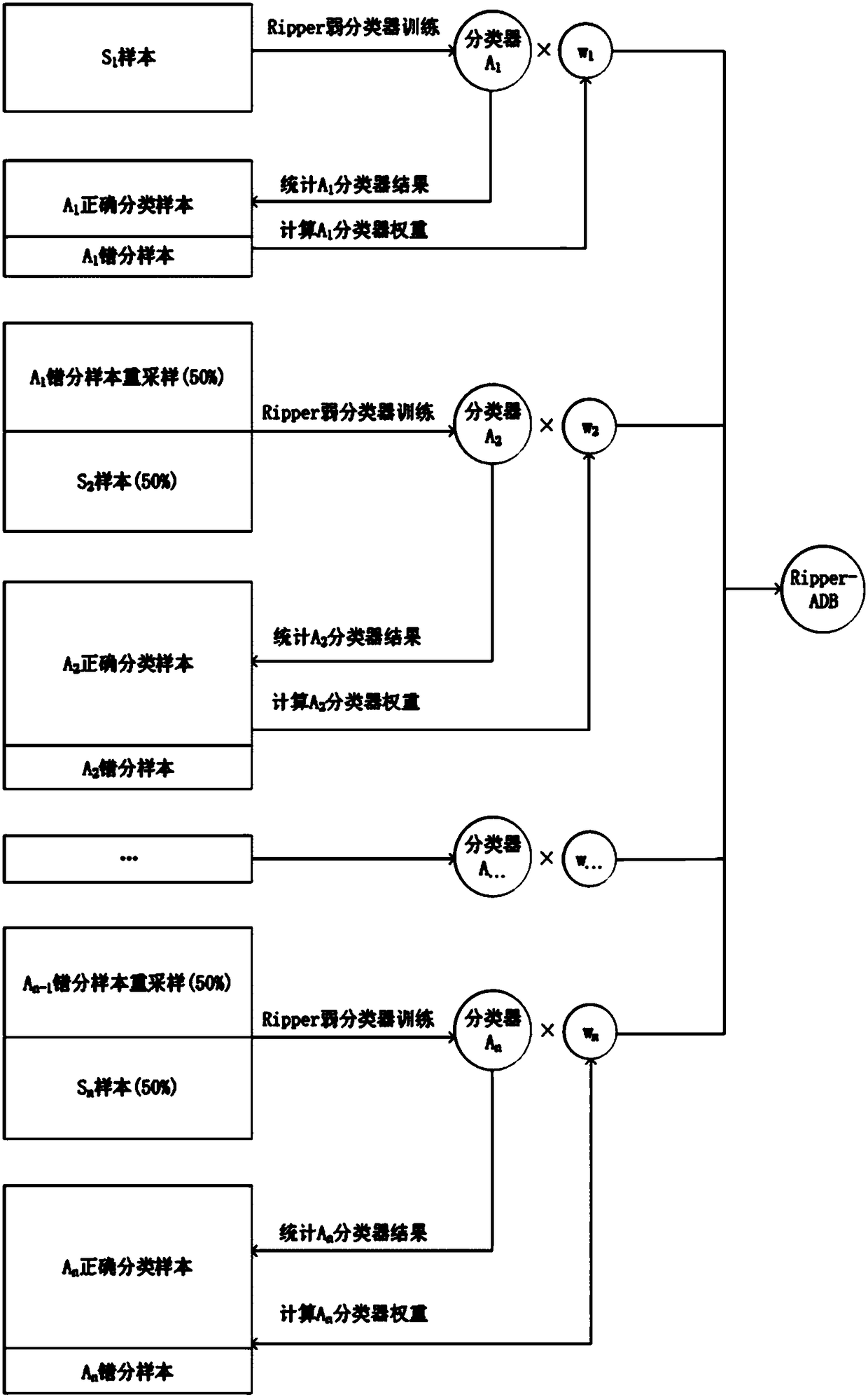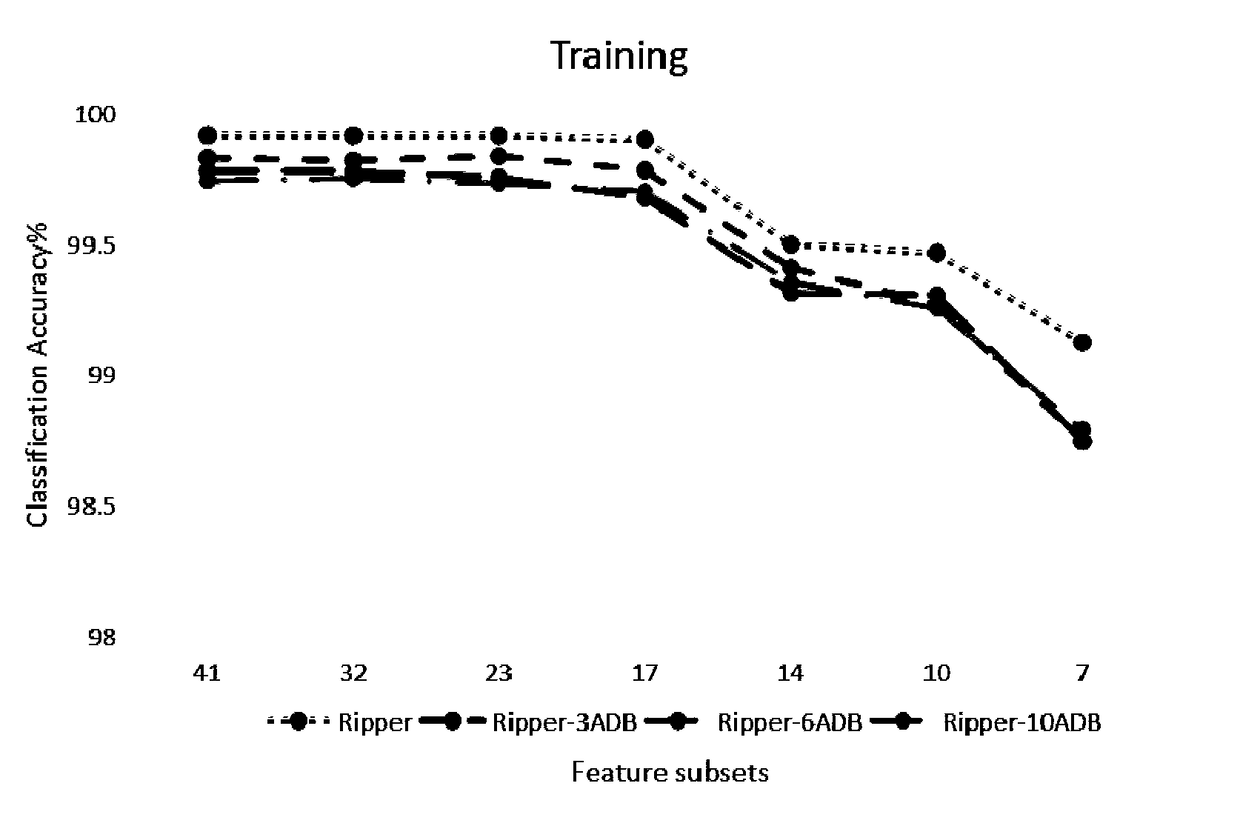Data classification method
A data classification and classifier technology, applied in the field of data processing, can solve the problems of increasing sample weight, difficult training, incomplete training, etc., to achieve the effect of ensuring complete training, improving accuracy and performance
- Summary
- Abstract
- Description
- Claims
- Application Information
AI Technical Summary
Problems solved by technology
Method used
Image
Examples
Embodiment Construction
[0041] The present invention will be further described below in conjunction with the accompanying drawings and specific preferred embodiments, but the protection scope of the present invention is not limited thereby.
[0042] Such as figure 1 As shown, the data classification method of this embodiment, the steps include:
[0043] S1. Obtain a training set sample for training a classifier, and equally divide the obtained training set sample according to the number of iterations required for training to obtain multiple training subset samples;
[0044] S2. Based on the Adaboost algorithm, multiple weak classifiers are used to train each training subset sample respectively, and when each weak classifier is trained, a part of the training subset samples and some error samples obtained by the previous weak classifier are selected to form the final The training samples of , the final ADB strong classifier is obtained from each weak classifier after training;
[0045] S3. Use the t...
PUM
 Login to View More
Login to View More Abstract
Description
Claims
Application Information
 Login to View More
Login to View More - R&D
- Intellectual Property
- Life Sciences
- Materials
- Tech Scout
- Unparalleled Data Quality
- Higher Quality Content
- 60% Fewer Hallucinations
Browse by: Latest US Patents, China's latest patents, Technical Efficacy Thesaurus, Application Domain, Technology Topic, Popular Technical Reports.
© 2025 PatSnap. All rights reserved.Legal|Privacy policy|Modern Slavery Act Transparency Statement|Sitemap|About US| Contact US: help@patsnap.com



